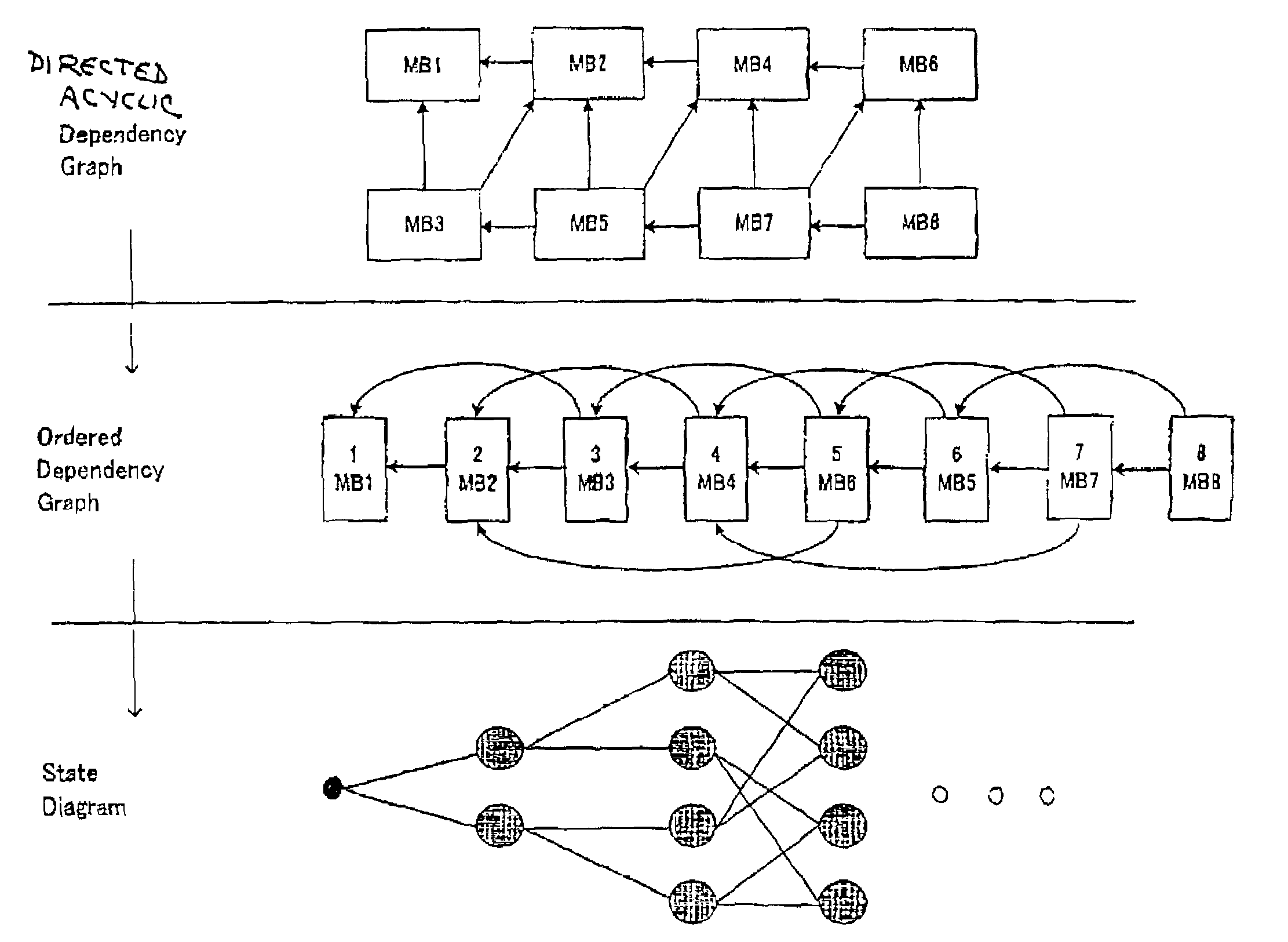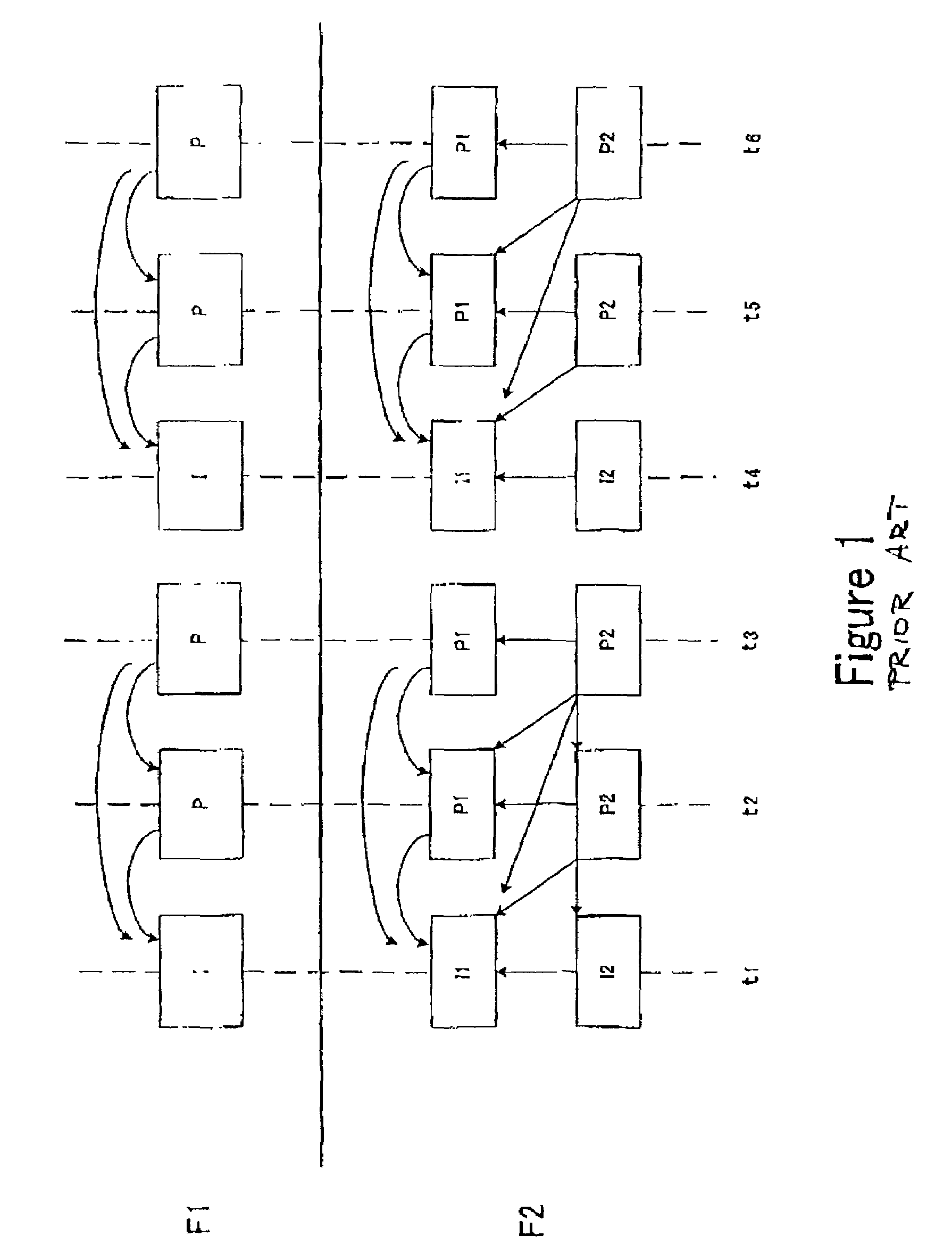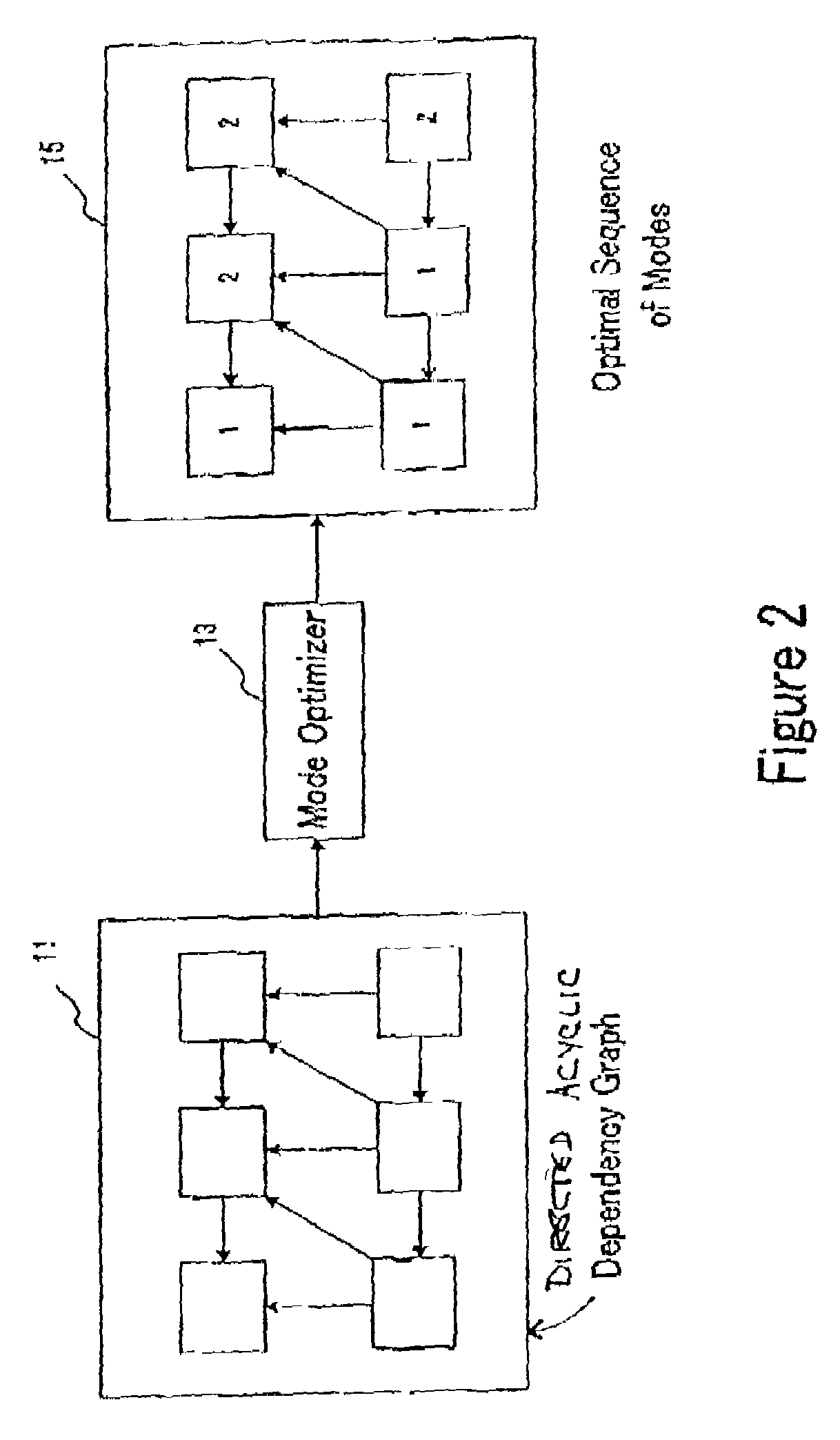Method of and system for optimizing mode selection for video coding
a video coding and mode selection technology, applied in the field of video coding optimization methods and systems, can solve the problems of computational complexity, less number of bits may be necessary, and more complex computation than necessary
- Summary
- Abstract
- Description
- Claims
- Application Information
AI Technical Summary
Benefits of technology
Problems solved by technology
Method used
Image
Examples
Embodiment Construction
. 2-6
[0034]In video coding, a sequence of decisions needs to be made. Each decision is selected from a finite set of “modes.” The performance of each decision depends on the corresponding selected mode for the decision, as well as the modes of a subset of other decisions.
[0035]In FIG. 2, the dependency of each video coding decision is expressed as a directed acyclic graph that is represented by block 11. Block 11, a schematic view of a directed acyclic dependency graph, provides a general idea of the operation of a dependency graph. An actual example of a dependency graph that can be used in the acyclic dependency graph forming block 11 is shown in FIG. 4. The rectangles in the dependency graphs, e.g., the rectangles within the graph represented by block 11, represent macroblocks (MB). The macroblocks of directed acyclic dependency graph 11 are labeled MB1, MB2 . . . MB8 in the directed acyclic dependency graph of FIG. 4. The dependency graphs of the drawings are “directed” because ...
PUM
 Login to View More
Login to View More Abstract
Description
Claims
Application Information
 Login to View More
Login to View More - R&D
- Intellectual Property
- Life Sciences
- Materials
- Tech Scout
- Unparalleled Data Quality
- Higher Quality Content
- 60% Fewer Hallucinations
Browse by: Latest US Patents, China's latest patents, Technical Efficacy Thesaurus, Application Domain, Technology Topic, Popular Technical Reports.
© 2025 PatSnap. All rights reserved.Legal|Privacy policy|Modern Slavery Act Transparency Statement|Sitemap|About US| Contact US: help@patsnap.com



